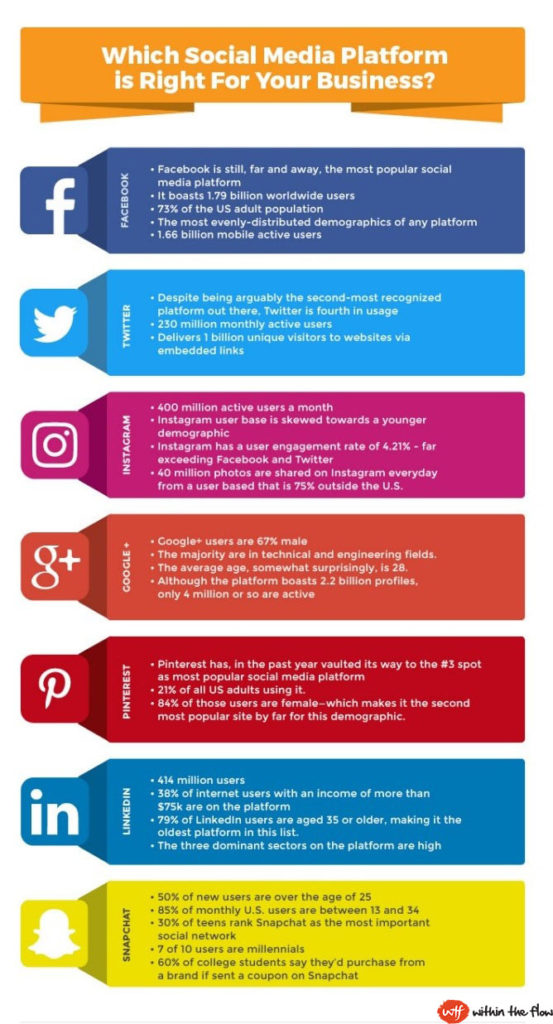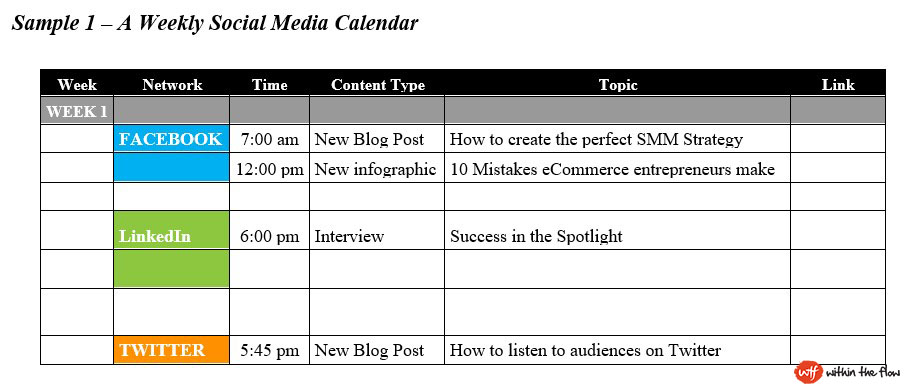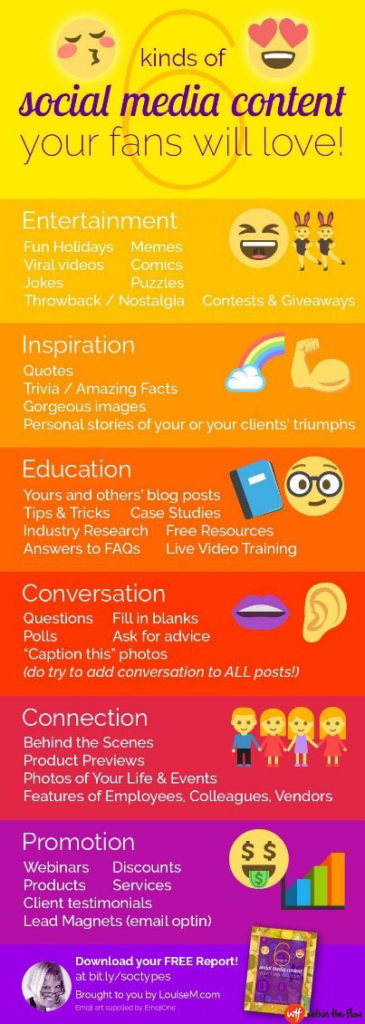Perfect Social Media Marketing Plan in 7 Steps
- Oct-18-2017
- Ameer Rizvi
- 1 comments
eCommerce stores can be created overnight, it’s just that easy. However, the real test begins once your store is curated, full of merchandise and processing orders. But, what do you do next? Just sit there and wait for fate to shine the spotlight to somehow shine on your store?
Several eCommerce journals (Entrepreneur, Practical ecommerce, Business2Community etc.) all rank “Not Having a Marketing Plan” in their top 7 reasons why eCommerce stores fail. Interestingly, 8 out of 10 eCommerce stores either fade away due to the absence of a Social Media Marketing (SMM) Plan.
In the sections that follow, we take a 7 step tour on how to design the perfect social media marketing plan. Have no doubts, this action plan can be the driving force behind your e-store’s success. Creating effective sales funnels can not only increase sales but create a lasting identity for your eCommerce store.
7 Steps to Create a Social Media Marketing Plan from Scratch
Before we dive into the how, we must understand why developing a social media marketing plan is essential. The first important factor is simply to be “proactive”, to be ahead of the competition. The plan should be well thought out and must address all relevant channels of social media marketing.
Also, the SMM plan needs to be diverse, by this I simply mean it should not rely on one channel. The SMM should be designed around a mix of different social networks, different content types, campaigns and most essential a contingency plan.
Lastly, a properly laid down social media marketing plan should allow you to scale the performance of activities. To achieve this you must define meaningful criteria and metrics that can be recorded and measured on a periodic basis. This is crucial if you wish to know the Return on Investment (ROI) for a particular marketing plan.
Look at AliExpress known for its ridiculously low prices, Amazon known for its super-efficient delivery services, and eBay for its open auctions. Every eCommerce store creates a certain identity, a brand image or a unique edge over the competition using its SMM plan.
Define Goals & Objectives
Defining goals & objectives is the first step of the Social Media Marketing action plan. Behind every successful marketing plan are defined goals & objectives to direct the flow of activities to audiences. What is your SMM’s purpose, do you wish to educate audiences, attract them, engage them or market products to them?
Most new entrepreneurs ask at this point, how do I start social media marketing goal planning? A very commonly used technique here is the S.M.A.R.T framework. SMART is the abbreviated term for the principles:
- Specific
- Measureable
- Attainable
- Relevant
- Time Limited
Specific
The first stage of SMART details that your SMM must be specific. This simply means it should address all specific social media marketing channels and what you wish to accomplish from them. Your goals should be specific to social media platforms and the results you wish to achieve. For example, increase Facebook followers by 50% in 2 months.
It is essential to decide at this point which platform(s) your social media strategy will target. This selection usually depends on factors including (but not limit to) your target personas, and platforms your competitors are succeeding on. Have a look at the amazing infographic from wishpond above and observe the statistics for top 7 social platforms targeted by most brands.
The interesting fact about SMART is that you can use it for both long term and short term goals. Start the process by listing down 5 most crucial objectives for your eCommerce store, what results you desire, and how you wish to achieve them.
Measurable
The second stage of SMART emphasizes on the fact that your marketing goals should be measurable. Goals with unrealistic metrics are a time waste and useless at the end of the day. Key Performance Indicators should be both realistic and easily quantifiable to analyze later on. Examples of measureable results include
- Number of new followers from your Instagram photos in a week, or,
- Click Through rate to e-store home page from your Instagram feed.
Attainable
Third comes the nature of your social media marketing goals and that they should be attainable. Setting unrealistic targets that cannot be achieved in a given time frame is again, a time waste. Set targets that can be achieved using your skills, time, capabilities, resources and tools.
Realistically, attracting a page following of 100k followers is impossible in a limited time frame. Hence, it is better to start with a realistic target of something like 10k new followers. It’s beneficial to have challenging goals not unrealistic ones.
Relevant
Relevance is the fourth stage in defining your social media marketing goals & objectives. If your goal is creating an email list of all your Facebook followers, then creating a YouTube video might not be the right idea. Consider creating a competition, giveaway or free gift offer on your Facebook page to allow the audience to submit their email IDs voluntarily.
Relevance also questions which platform(s) are targeted in your social media strategy. If your content is video and you are trying to publish it on Instagram, it might not have the desired effect on audiences. This maybe a great content choice for Snapchat, YouTube, and Facebook.
Always ensure that content is relevant to your target personas. If the content you are publishing doesn’t appeal to them, you are wasting time on irrelevant tasks. We will discuss how and where to find content that appeals to your audiences in later sections.
Time Limited
Time is of the essence, and also the final stage of defining your goals using the SMART framework. If you are not timing your activities, frequency of delivering content, and time spent on social media platforms then you are doing it wrong. It is essential to gauge all activities by timing them, hence assigning benchmarks for future objectives.
Completing or even failing to complete goals during specified time frames can be beneficial for you. This provides room to improve skills & resources required, while allowing meaningful analysis of all goals. You will then have benchmarks to measure and plan future goals & objectives with.
So, with all the basics of your planning stage covered lets brainstorm some definitive goals for your social media marketing campaign:
- Increase Instagram following by 1000 per month for 12 months
- Increase Facebook page followers by 2500 per month for 6 months
- Increase conversion rate through content by 2.5% in 15 days
- Gather 2000 emails per month for 6 months from all social networks
Social Listening Strategy
Designing a social listening strategy is invaluable to your overall marketing goals. In a survey conducted by PegaSystems, they report that a chunk of surveyed buyers identify that brands don’t listen to them. By definition Social Listening is “… the process of monitoring social media channels for mentions of your brand, competitors, product, and any other ideas or themes that are relevant to your business.”
In essence, social listening is online business intelligence necessary to formulate an effective social media marketing strategy. Social listening answer several important questions including:
- Who your audiences are?
- What are audiences saying about your brand?
- Why are they happy/sad with your brand?
- Where are your audiences primarily interacting?
- How is your brand name perceived amongst audiences?
Social listening can allow you to improve engagement, answer important questions, execute promotional activities, release new products, and much more. This very crucial stage offers excellent information to analyze when formulating goals. For instance, you can identify the best channel for your social media marketing and redesign social profiles if your brand awareness is low.
One significant insight that social listening provides is what customers expect from you and how you deliver on these expectations. Also, social listening is a brilliant way to track the effectiveness of marketing campaigns in real time. What happens if a strategy back fires? Take the example of Dove in their latest campaign. It took minutes for the backlash to arrive at their doorstep for yet another controversial marketing promo from the company.
Social audiences began ridiculing the promo, but, this allowed Dove to jump right in with an apology. Although Dove offend a lot of people, but, also got mass publicity with this stunt. People may call it racist, I call it DAMN GOOD social marketing.
Finding influencers is one of the most common issues in eCommerce. Influencers are brand advocates who have massive fan following on their social accounts. These advocates influence follower behaviors either in favor or against products. Social listening is a great opportunity to identify who the audiences listen to.
Social listening offers great insights about products, services, common issues, pain points and customer service issues. You can monitor social feeds using related industry keywords to be the first one to address issues and reach out to audiences.
Setting Up a Social Listening Strategy
Step1
The first step in creating a social strategy is listing down the relevant keywords that you want to monitor. Since there is a variety of social networks and a long list of keywords to monitor the task may prove challenging. But there is an abundance of social media marketing plan tools designed to do the same:
- SEM Rush – A toolkit dedicated to identifying keywords for effective keyword research, rank tracking, backlink research and link building, on-page SEO and content optimization.
- SEM Power Suite – Another SEO toolkit designed for the usual on-page SEO, ranking stats, backlink & link building analytics, content ideas and optimization.
- ahREFS – A prominent SEO tool with the usual backlink & link building features, SEO metrics, keyword research & analytics, and content analytics.
- Hootsuite – A brilliant social media management system designed to monitor social accounts on Twitter, Facebook, Instagram, LinkedIn, Google+, YouTube and many others. Hootsuite also provides scheduling posts for social networks while providing analytics for all activities.
- Buzz Sumo – A brilliant tool that monitors social websites and ranks them accordance to shares on Facebook, Twitter, LinkedIn, Google+, & Pinterest. Users can view analytics for both their own and competitors’ content.
- Moz – A trusted inbound marketing management, insights, and analytics tool with a bit of SEO in it. Moz is a set of brilliant tools to search for keywords, business insights, and much more in one dashboard.
Step 2
Once you have sorted out the tools to employ, the second step to discover the keywords to monitor for listening. Keywords are basic search terms that your audience uses in their conversations, mentions, complaints, feedback and reviews. These keywords change or increase over time as your social listening strategy develops. Your keyword search should start with terms related to:
- Brand name(s) and related terms
- Product & Business names
- Competitors’ brands & products
- Industry slogans, slang and catch phrases
- Campaign names
- Competitor and your own brand hashtags
- Unbranded hashtags of the industry
- Your company personnel names
Again, you can choose from our social media marketing planning tools mentioned above. For instance, BuzzSumo & Hootsuite can help monitor mentions and hashtags about your brand and company. Moz & ahREFS can help you sort out the best keywords and those of your competitors.
Step 3
So, with all relevant requirement sorted step 3 is basically, listening. You must adhere to the following as all these tips can be immensely helpful for evolving your eCommerce brand.
- Identify what audiences are saying about your brand
- Identify where these conversations are taking place
- Learn from your competitors
- Create a collaborative culture between customer service, marketing & product development teams
- Create benchmarks, then evolve your listening strategy as you gather more data
- Routinely analyze collected data and take action where necessary
Get Inspired – Keep an Eye on Competitor’s Social Media Strategy
If you are fairly new to eCommerce discovering the best content that works with your niche(s) will take time. Rather waste time trying to discover the best formula, it is suggested to have a look at what your competition is delivering to their audiences. Remember the point, learn from competitors in step 3 above.
Your competition has already done the hard work and tested different content formulas to got one to work. Go a step ahead, create new content ideas by integrating different content types like video, podcasts, e-books, memes, tips & tricks, interactive blogs and live Facebook video feeds.
Another good idea is to listen to what the competition is positioning itself. You can create your brand’s personality and by simply following how competitors built theirs. It is also recommended to not only listen but analyze the SMM strategies of the competition. Discover new campaign ideas, discount offers, coupons, giveaways and new tricks from the competition.
Related Article:
11 Hacks to Use Facebook Audience Insights
Create a Social Media Marketing Content Calendar
If you ask any social media marketing professional, content is definitely king. Delivering quality & unique content is essential to attract, engage, and grow your brand followers. This part of Social Media Marketing begins with the creation of a content calendar. A content calendar should address the following aspects:
- The frequency of social media content
- The types of content to be published
- The number of content posts to be published on social media
- Analyze content performance metrics to conclude how it helps your eCommerce store

You can always create a social content calendar on an excel sheet and keep it updated as you go. The important feat is to schedule and publish content regularly as you have planned. Innovative tools like Buffer & Hootsuite provide both calendar management and scheduling services. Content is published to your assigned social networks without the worries of doing it manually.
One very crucial aspect when publishing content on social media is the ‘time’. Your content must be displayed to the audience when they are online. Publishing at your own convenience is not the way to go, always consider using content scheduling services. Test different content types, test them at different times and analyze them to evolve your content.
How to Measure Social Media Marketing Performance
We’re now done with the difficult part of your social media marketing strategy. It’s now time to observe current activity & content, record performance, and improve. The questions that come to mind here is just how will you measure content performance? What factors evaluate the different content tests you have executed over time?
In the beginning there were no metrics, just estimates that you had to come close to or achieve. Historically, social content performance has been measured using:
- Content Reach – the total audience your content was sent to
- Impressions – number of people who viewed the content
- Engagement – people who liked, shared and read the content
- Inbound e-store traffic – people who clicked your store link through the content
- Leads generated – the number of prospect customers engaged through the content
- Sign-ups & Email – visitors that subscribed to your e-store or email list
- Conversions – number of visitors who bought products
- Revenue generated – the increase in revenue attributed to social content

You can also use basic content metrics including likes and shares in case your primary goal is to educate audiences. This can include sharing content about product features, identifying problems and offering solutions. eCommerce businesses starting out can also use basic metrics initially and then move on to advanced ones as they grow.
Social Media Marketing Strategy Outline
So what should a social media marketing strategy look like? If you ask me it requires no more than an excel sheet on MS Office. Keep it simple, unless you have a management system that provides proper templates for it. You can however discover a selection of social media marketing plan templates in a simple Google search. Here are some great examples:
The great aspect of having a calendar is that you can schedule several tasks and publish them throughout the day. A great idea for your content and social media calendars is to use scheduling apps. For instance Hootsuite can be used to schedule posts on Twitter, Instagram, and Facebook.
See You Again Soon
That’s all folks! Hope you find my 5 steps to creating the perfect social media marketing plan lucrative for your ecommerce business. Do remember to share your feedback if I missed something, and share with others to help them with their online business.
For more eCommerce tips, tricks & hacks join our community of specialist digital marketers and eCommerce professionals. Also consider joining our mailing list to receive latest blogs, articles, guides and tips directly in your email inbox. Be part of our ever helpful community and watch your e-store grow every day with a flow of brilliant e-business practices, see you again soon.



 Facebook Audience Insights – A Helpful Illustrated Guide 2021
Facebook Audience Insights – A Helpful Illustrated Guide 2021  Free Plus Shipping – How Free Plus Shipping Facebook Ads Work?
Free Plus Shipping – How Free Plus Shipping Facebook Ads Work?  Facebook Video Marketing Secrets to Get 10 Million reach in 14 days
Facebook Video Marketing Secrets to Get 10 Million reach in 14 days  How To Get Verified on YouTube to Build Trust
How To Get Verified on YouTube to Build Trust
Hello Ameer, I have been through your article and i have get useful tips to grow my small handcraft business. I have not big fund. So, i have started with social media but i think to grow well i need to follow your tips as well.